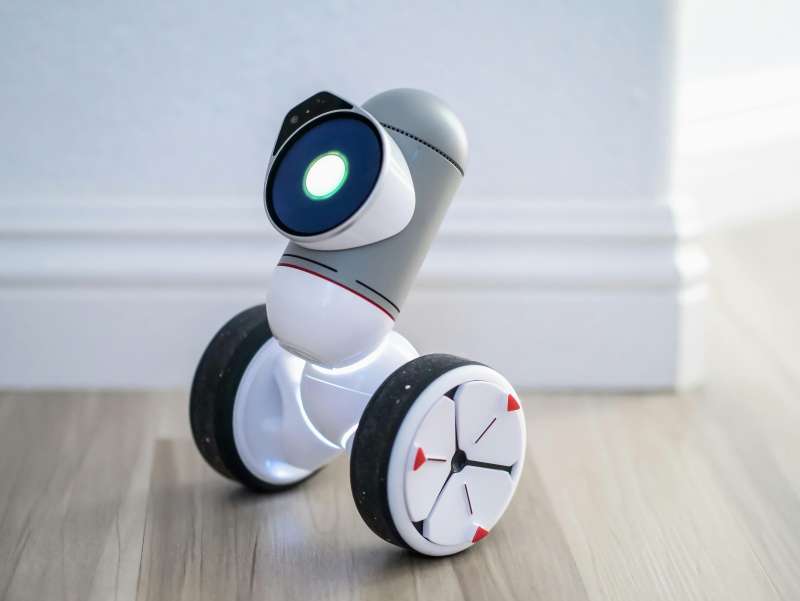Rehabilitation Robots: Enhancing Recovery After Injuries
Published on: May 8, 2025
The Evolution of Rehabilitation Robotics
Rehabilitation robots have dramatically transformed the landscape of physical therapy and recovery medicine in the 21st century. The history of these systems can be traced back to the late 20th century, when researchers and engineers began exploring the use of robotics to assist patients with neurological and musculoskeletal impairments. Early prototypes were rudimentary, focusing mainly on repetitive motion exercises for stroke survivors. However, rapid advancements in robotics, artificial intelligence, and sensor technology have led to the development of sophisticated machines capable of delivering highly personalized therapy. Today, rehabilitation robots are an integral part of many hospitals and specialized centers worldwide, offering hope and improved outcomes for patients recovering from a wide range of injuries and surgeries.
How Rehabilitation Robots Work
Rehabilitation robots are designed to assist, guide, or resist patient movements in a controlled manner. These systems typically consist of mechanical arms, exoskeletons, or end-effector devices that interact directly with the patient’s limbs. Advanced models are equipped with sensors that monitor the patient’s performance in real time, collecting data on movement patterns, force, speed, and range of motion. This information is processed by onboard computers, which use algorithms to adjust the therapy parameters and provide instant feedback. The result is a highly adaptive system that can tailor exercises to the unique needs and abilities of each patient, ensuring optimal challenge and progression throughout the recovery process.
Many rehabilitation robots feature interactive interfaces, including touchscreens and virtual reality environments, to engage patients and motivate them during therapy sessions. Some systems also incorporate gamification elements, turning repetitive exercises into enjoyable tasks that encourage active participation and adherence to treatment protocols. The combination of precise mechanical assistance and engaging digital feedback creates a powerful tool for restoring motor function and accelerating recovery.
Applications in Post-Injury and Post-Surgical Rehabilitation
The primary goal of rehabilitation robots is to help patients regain lost motor functions following injuries such as strokes, spinal cord injuries, traumatic brain injuries, fractures, and orthopedic surgeries. These robots are particularly effective in the early stages of rehabilitation, when patients may lack the strength or coordination to perform exercises independently. By providing adjustable levels of support, robots enable patients to complete movements they would otherwise be unable to achieve, facilitating neuroplasticity and muscle re-education.
- Stroke Rehabilitation: Stroke is one of the leading causes of long-term disability worldwide. Robotic systems such as the Lokomat, Armeo, and InMotion ARM have been extensively used to help stroke survivors recover arm and leg function. These robots guide the affected limbs through repetitive, task-specific movements, which are critical for rewiring the brain and restoring voluntary control.
- Spinal Cord Injury: Patients with spinal cord injuries often experience partial or complete paralysis. Robotic exoskeletons like Ekso Bionics and ReWalk allow these individuals to stand, walk, and perform functional activities, even in cases of severe impairment. Regular use of such devices has been shown to improve muscle strength, cardiovascular health, and psychological well-being.
- Orthopedic Rehabilitation: After surgeries such as knee or hip replacements, patients require intensive physical therapy to restore joint mobility and strength. Robotic devices can deliver precise, repeatable exercises that promote safe and effective recovery, reducing the risk of complications and speeding up the return to normal activities.
Rehabilitation robots are also being used in pediatric settings to support children with cerebral palsy, muscular dystrophy, and other developmental disorders. By making therapy more engaging and less physically demanding for both patients and therapists, these systems are helping to close the gap in access to high-quality care.
Personalized Therapy and Data-Driven Feedback
One of the most significant advantages of robotic rehabilitation is the ability to deliver personalized therapy based on objective data. Unlike traditional therapy, which relies heavily on the therapist’s subjective assessment, robots measure every aspect of the patient’s performance with high precision. This data is used to create individualized treatment plans that adapt in real time to the patient’s progress and challenges.
For example, if a patient demonstrates improved strength or coordination, the robot can automatically increase the difficulty of the exercises by reducing assistance or increasing resistance. Conversely, if the patient struggles with a particular movement, the system can provide additional support or modify the task to ensure continued progress. The detailed records generated by these systems allow therapists and physicians to track outcomes, identify trends, and make evidence-based adjustments to the rehabilitation plan.
Moreover, patients benefit from immediate feedback on their performance, which enhances motivation and engagement. Visualizations of progress, scores, and achievements can be displayed on screens or through virtual reality interfaces, turning therapy sessions into interactive experiences. Studies have shown that this approach leads to higher levels of adherence and better functional outcomes compared to conventional therapy alone.
Integration with Telemedicine and Remote Monitoring
The COVID-19 pandemic accelerated the adoption of telemedicine and remote healthcare solutions, including the use of rehabilitation robots outside traditional clinical settings. Some modern robotic systems are designed for home use, allowing patients to continue their recovery without frequent visits to the hospital or clinic. These devices are often equipped with internet connectivity, enabling therapists to remotely monitor progress, adjust therapy parameters, and provide guidance via video consultations.
Remote rehabilitation robots have proven particularly valuable for patients living in rural or underserved areas, where access to specialized care may be limited. By bridging the gap between patients and healthcare providers, these systems are democratizing access to high-quality rehabilitation and reducing the burden on healthcare facilities. The integration of telemedicine platforms with robotic therapy is expected to continue growing, driven by advances in wireless technology, cloud computing, and artificial intelligence.
Technological Innovations in Rehabilitation Robotics
The field of rehabilitation robotics is characterized by rapid innovation and interdisciplinary collaboration. Engineers, clinicians, neuroscientists, and software developers are working together to create next-generation systems that are more intuitive, effective, and accessible. Some of the latest advancements include:
- Soft Robotics: Traditional rehabilitation robots are often bulky and rigid, limiting their comfort and versatility. Soft robotic devices, made from flexible materials and actuators, can conform to the patient’s body and provide gentle, naturalistic assistance. These systems are particularly well-suited for hand and finger rehabilitation, where fine motor control is essential.
- Wearable Exoskeletons: Lightweight, battery-powered exoskeletons are enabling patients to walk, climb stairs, and perform daily activities with greater independence. Advances in materials science and miniaturization have made these devices more affordable and practical for use outside the clinic.
- Brain-Computer Interfaces (BCIs): Some research groups are developing systems that allow patients to control robotic devices using their brain signals. By interpreting electrical activity from the scalp or implanted electrodes, BCIs can translate the patient’s intentions into movement, bypassing damaged neural pathways. This technology holds promise for individuals with severe paralysis or locked-in syndrome.
- Artificial Intelligence and Machine Learning: AI algorithms are being used to analyze patient data, predict recovery trajectories, and optimize therapy protocols. Machine learning models can identify patterns that are not apparent to human observers, enabling more precise and effective interventions.
These technological breakthroughs are expanding the capabilities of rehabilitation robots and opening new possibilities for personalized, data-driven care.
Clinical Evidence and Patient Outcomes
The effectiveness of rehabilitation robots has been the subject of numerous clinical studies over the past two decades. Meta-analyses and randomized controlled trials have consistently demonstrated that robotic-assisted therapy can lead to significant improvements in motor function, strength, and independence compared to conventional therapy alone. For example, a 2017 review published in the journal "Stroke" found that patients who received robotic arm training after stroke achieved greater gains in upper limb function than those who received standard therapy.
Other studies have highlighted the benefits of robotic gait training for individuals with spinal cord injuries and multiple sclerosis. These patients often experience improved walking speed, balance, and endurance after participating in robot-assisted programs. Importantly, robotic therapy is generally safe and well-tolerated, with few adverse events reported in the literature.
Patient satisfaction with robotic rehabilitation is also high, particularly when systems are designed to be user-friendly and engaging. Many patients appreciate the ability to track their progress, set goals, and receive immediate feedback. Therapists benefit from reduced physical strain and the ability to focus on more complex aspects of care, such as motivation and psychological support.
Challenges and Limitations
Despite the many advantages of rehabilitation robots, there are also challenges and limitations to their widespread adoption. One of the primary barriers is cost, as advanced robotic systems can be expensive to purchase, maintain, and operate. This can limit access in low-resource settings and smaller healthcare facilities. Efforts are underway to develop more affordable and scalable solutions, including open-source hardware and software platforms.
Another challenge is the need for specialized training. Therapists and clinicians must learn how to operate and integrate these systems into their practice, which requires time and resources. In addition, not all patients are suitable candidates for robotic therapy. Severe cognitive impairments, uncontrolled medical conditions, or behavioral issues may limit the effectiveness of these interventions.
There are also questions about the optimal dosage and duration of robotic therapy, as well as the long-term sustainability of functional gains. Ongoing research is needed to refine treatment protocols and identify which patients are most likely to benefit from these technologies.
Global Adoption and Future Directions
Rehabilitation robots are now used in hospitals and rehabilitation centers across North America, Europe, Asia, and beyond. Countries such as the United States, Germany, Japan, and South Korea have been at the forefront of research and implementation, but adoption is spreading rapidly to other regions. International collaborations and knowledge-sharing initiatives are helping to accelerate the development and dissemination of best practices.
Looking ahead, the future of rehabilitation robotics is bright. Advances in artificial intelligence, materials science, and human-machine interfaces are expected to yield even more effective and accessible systems. The integration of robotics with virtual reality, telemedicine, and wearable sensors will enable seamless, continuous care across clinical and home environments. As these technologies become more affordable and user-friendly, they have the potential to transform rehabilitation for millions of patients worldwide, helping them return to normal life faster and with greater independence.










